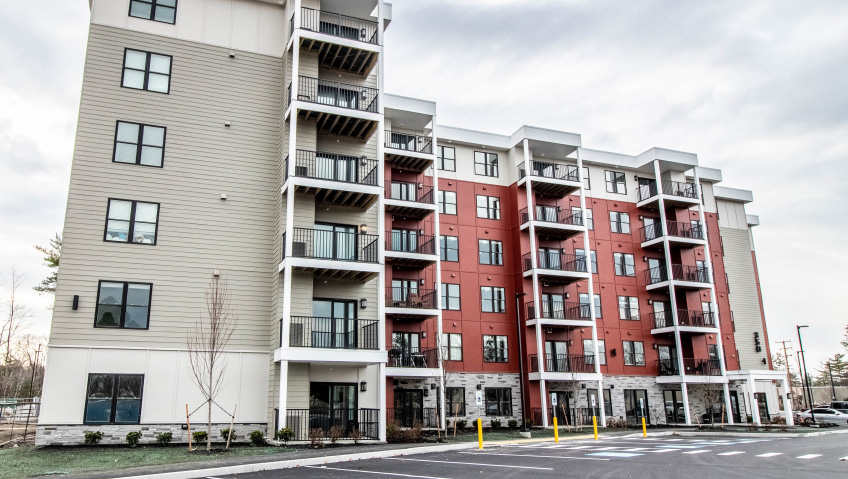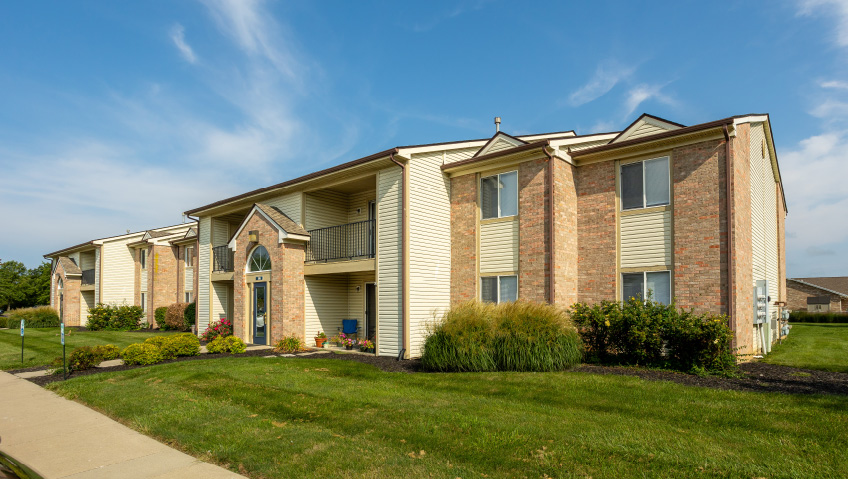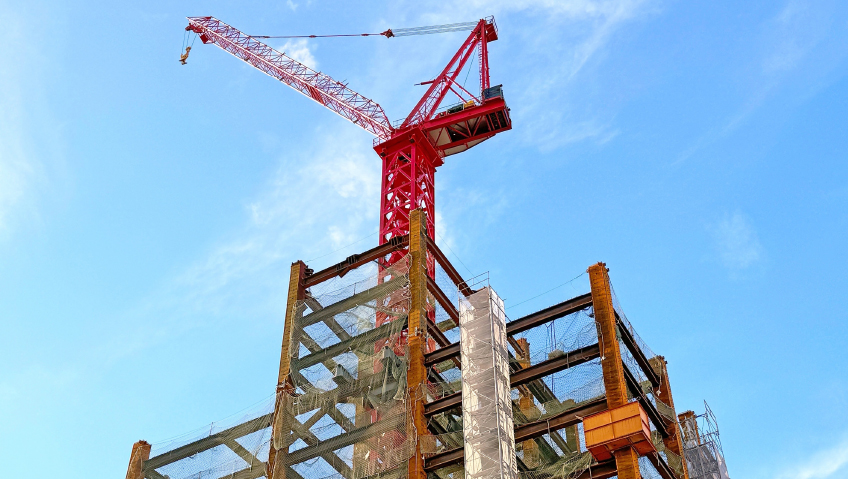With gathering environmental concerns and the looming threat of climate change, Bright Power’s energy and water management counseling for real estate stakeholders means it’s bringing practical change to vital issues through utility bill analytics and sophisticated advice.
Along with supporting the design, construction, and operation of low carbon-emitting multi-family buildings in New York, Bright Power also supports the Climate Leadership and Community Protection Act (Climate Act). This program will help New York State achieve economy-wide carbon neutrality with an 85 percent reduction in greenhouse gas emissions by 2050.
Bright Power also offers a wide variety of consulting services, including design, construction management and installation of solar, HVAC, and lighting systems.
Design and construction includes Passive House principles, a building design standard that typically performs to an extremely high standard with significantly lower operation costs – up to a 90 percent reduction in heating and cooling demands, and up to a 75 percent reduction in overall energy demand – while still providing comfort and a healthy environment for users and residents of the building.
Key principles
“These buildings are typically more resilient to power outages because of the five key design principles they employ. Those principles are: no thermal bridging between materials, superior high-performance windows, mechanical ventilation with heat recovery and filtration, increased insulation in the thermal envelope, and a super airtight construction,” says Carmel Pratt, Director of New Construction. “This is helping New York meet its strict and aspirational climate goals.”
New York City has new legislation that limits buildings’ carbon emissions, beginning in 2024 with a set cap for buildings larger than 25,000 square feet, with a plan to further reduce that in 2030.
So developers will need to double down on the high-performance and energy-efficient aspects of the buildings that they’re developing now to meet those future limits in 2024 and 2030, otherwise they’ll end up paying hefty fines.
As well as being in accordance with those climate goals, Bright Power is also providing sustainability features and design support on new developments that have been awarded funding in the Buildings of Excellence Competition, administered by The New York State Energy Research and Development Authority (NYSERDA).
Bright Power contributed to 14 Buildings of Excellence projects, working on five of the second round of awardee projects, all of which have Passive House-inspired design, with four actively seeking Passive House certification. These are: The Rise, developed by Xenolith Partners and designed by Magnusson Architecture and Planning PC; Bethany Terraces Senior Houses, developed by Riseboro Community Partnership and designed by Paul A. Castrucci Architects PLLC; Dekalb Commons developed by St. Nicks Alliance and designed by Magnusson Architecture and Planning PC; Linden Boulevard Phase 3 developed by Radson Development and designed by Magnusson Architecture and Planning PC.
“As with Passive House, it’s great that the carbon emission law does incentivize electrifying your buildings. In theory electricity should have a lower carbon coefficient or footprint, but it’s hard to electrify in New York City because of how expensive electricity is,” says Andrea Mancino, Executive Vice President, New York.
“Passive House buildings use significantly less energy than typical buildings,” she says. “Even if you aren’t pursuing Passive House, a really strong strategy to meet the carbon emissions law is to reduce how much energy you’re using, even if it is fossil fuels. It’s the best thing you can do if electrification isn’t on the table.”
New York State sets standards
New York’s energy code is a unique and innovative law that other cities and states are replicating, so expect new buildings and renovations to be held to a very high standard in accordance with its code.
“This law comes out of the Climate Mobilization Act which impacts all boroughs of New York City, along with pre-existing local laws,” adds Pratt. “The Climate Mobilization Act has laws written into it to reduce energy, but they also look at environmental justice and how we’re serving communities that have been historically disadvantaged by energy codes, by power plants, and by Green Workforce Development that hasn’t necessarily included them,” she explains. “That’s important when we’re talking about creating a brighter, more sustainable future. You need to include the people who are impacted by these buildings.”
The company did a recent study in partnership with other industry experts comparing six multi-family Passive House properties against buildings that were built to baseline code. That study found that Passive House buildings would easily meet the 2030 targets, including the notched-up targets set by this legislation. All but one Passive House property in the study would meet the strict projections for 2050 – a goal of 80 percent reduction – while the conventionally built, code minimum pure buildings did not meet those limits.
“New York is setting the standard,” says Mancino. “It’s really exciting. It’s first-of-its-kind legislation, and really nationally acclaimed at this point. Other cities are looking at New York. I think we all hope in this industry that it sets a precedent, not just for legislation, but also for energy codes across the nation.”
Find, Fix, Follow
Bright Power’s “Find-Fix-Follow” approach allows the company to leverage utility-performance data of upwards of 100,000 buildings, using energy data to identify priority projects or projects that are right for a retrofit. In conjunction with going into a building and investigating opportunities, the company’s also looking at how the building is consuming energy through data from utilities.
“Once we identify the opportunities, and the energy-conservation measures that we want to implement, we actually convert those into a retrofit project, where we go in and implement energy conservation measures,” says Mancino.
“We use a turnkey process, where we hire subcontractors to install measures and perform the project management. Then, we make sure everything is commissioned, that the building is operating the way it should, either with old equipment that was there, or new equipment that we’ve installed. We just want to make sure everything is operating as well as it possibly can once the project is complete.”
After collecting all relevant utility data of the building, Bright Power can analyze this, revealing how the building performed after the retrofit versus before, and from this comparison see whether they were actually able to save energy.
“By implementing our MoBIUS Service as an add-on to the retrofit, we’re able to continuously monitor the building even after we’ve completed the project. This is a really critical way to ensure our customers are hitting their savings targets,” she adds.
Bright Power’s MoBIUS allows the company to have data and do real-time energy monitoring using sensors and information from the building. That’s paired with a human element where an engineer assigned to the project looks at both how the building is consuming energy and any data received from the real-time monitoring. That sets Bright Power apart, as a lot of companies will just set up a dashboard or widget that furnishes raw information. There needs to be someone to convert that into measured and suitable action.
“Our company and engineers develop a very tight relationship with building staff,” says Mancino. “We’re able to talk to them in real time and have them look into any issues and help resolve them. We also focus heavily on creating operation and maintenance plans, and training site staff to be proactive.”
“We’re not just identifying issues as they show up, but proactively working with building operators as they operate and maintain the building to achieve energy savings, ensuring the useful life of the equipment is prolonged.”
Tangible benefits
This combination of training, real-time energy management, and continuously commissioning different systems ensures there’s a flat typical energy usage with no major spikes.
“This is really important for the comfort of people in the building,” says Pratt. “If people are comfortable, they’re getting enough heating and cooling, property management isn’t getting complaints, everyone’s costs are low, and we know that we’re doing a good job. We’re able to verify, not just through our data, but also from people’s own feedback about living in the building, that what we’re doing is working.”
Bright Power typically works with customers who see the benefit in energy savings and want to understand the technology. The company also provides education and training to developers or portfolio property managers.
“People have really seen the benefit,” says Pratt. “There are different ranges of the service. You can be really granular in what you monitor or you can be less data-driven, optimizing building operations where we have more building staff to work with and less data. So there are different flavors of the service.”
A perfect example of the convergence of these services is Park Avenue Green, a project owned and developed by Omni New York LLC and a Buildings of Excellence awardee. This PHIUS Passive House-certified property has MoBIUS in place to monitor a variety of systems.
These include the solar PV system, cogeneration system, condensing boilers, the variable refrigerant flow for the heating and cooling of both the indoor and outdoor units of energy-recovery ventilators or ERVs, responsible for the constant continuous ventilation, and also the make-up air units.
All of these systems are being monitored in real time on an ongoing basis.
“There are definitely hiccups and some difficulties in operating these new kinds of innovative technology. They are a bit of a learning curve for building operators, but we’re seeing a significant and stable energy consumption and reduction from Park Avenue Green in comparison to its neighboring property Morris Avenue Apartments,” says Pratt. Morris, for example, has a larger spike in energy usage, especially in the colder months, indicating the resiliency of the Passive House envelope even in extreme weather. Bright Power and Omni New York LLC are comparing the operations data from the two buildings as part of the Buildings of Excellence Competition.
“I want to point back to the people aspect,” says Pratt. “This type of standard and the benefits you get from a Passive House building are most important for an affordable-housing population which Park Avenue Green is. About 90 percent of the new construction work we do is in affordable housing, but it’s also a theme across the buildings that we’re involved in with the Buildings of Excellence Competition.”
Going national with Mobius
Bright Power’s bright future includes expanding into the Northeast Corridor, Boston, and Washington, DC, but the biggest project involves expanding MoBIUS to be implemented nationally, looking at services currently offered, and working on how to scale them at more of a national level.
Within New York, Bright Power’s biggest effort will be helping prepare customers for the mandatory 2024 and 2030 caps. Bright Power also remains dedicated to more Passive House projects, examining materials used, and employing a holistic approach for high performance that includes everything from how the building is made and what it’s constructed from to how it consumes energy – all while making it affordable.
“How do we make these standards and these systems cost-effective and replicable across affordable housing at scale so the most people can benefit from this and more developers can see these examples?” asks Pratt.
“We want them to say ‘Yes, we can do this,’ and for them to understand this is why it’s not scary or super expensive. There’s a learning curve, but we can get around it.”






